Using my own experiences of making, ordering, and devouring charcuterie boards across the globe. I’ve also compiled professionally food-styled charcuterie boards with many different ideas to inspire you.
Cured meats are an essential part of a classic charcuterie board since this is my passion – I have tried to come up with some unique ideas for you. You will also find some vegan and vegetarian-inspired images below.
I will do some specific commentary as a selected judge of charcuterie on some of the inspirational images below.
The creativity of a charcuterie board is the key to success in my opinion. Orderly or chaotic – it can work in many ways.
Many of these photos are from professional photographers, who have a gift and passion for crafting these visually inspiring charcuterie board layouts, patterns, and styles.
I wanted to write my thoughts on charcuterie boards (here I wrote about different types of boards you can get), hopefully, to inspire you to explore your style or themes.
A few decades ago, I remember hearing about the meat & cheese platter. It seems the natural progression of this has happened, it has formed and morphed considerably. Most recently, into these various styles of charcuterie platters.
I love a ‘themed’ style and will highlight some of these below as well.
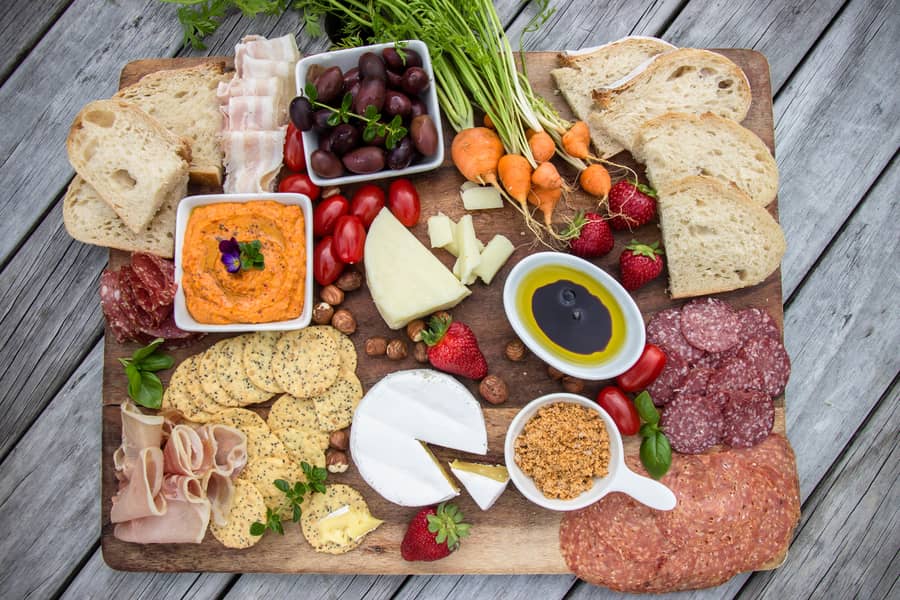
Unique Charcuterie Board Inspiration, Images & Ideas

A very busy board, with a lot of variation, surprisingly not that much meat, more fruit, and the color of a lot of vegetables. Interesting and unique!
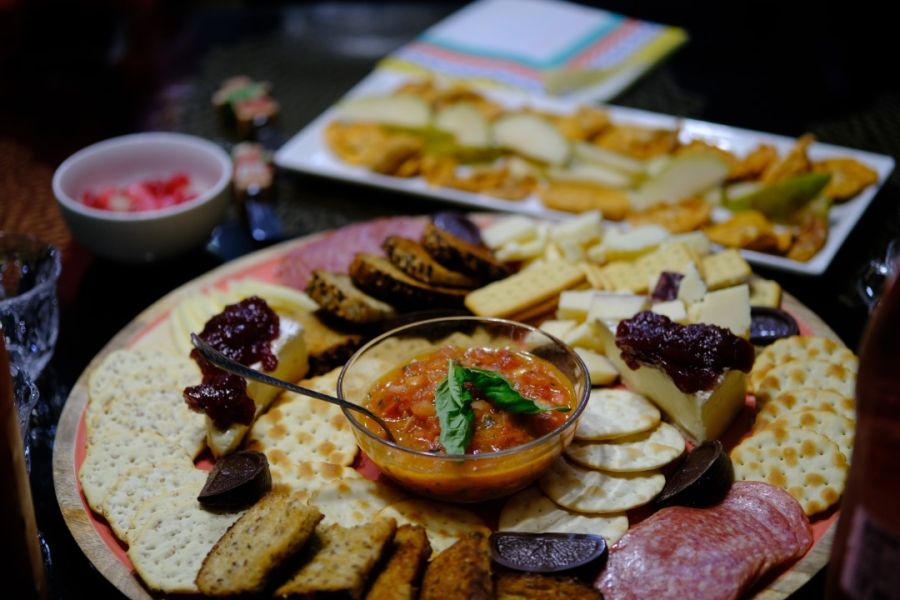
A dark and moody charcuterie board cheese is the focus with various cracker condiments.

I love this one, minimalist with big contrasts using green Silician olives, and a stripped dark and light wood background. Charcuterie boards don’t need to be loaded with food, this is a great example of that.
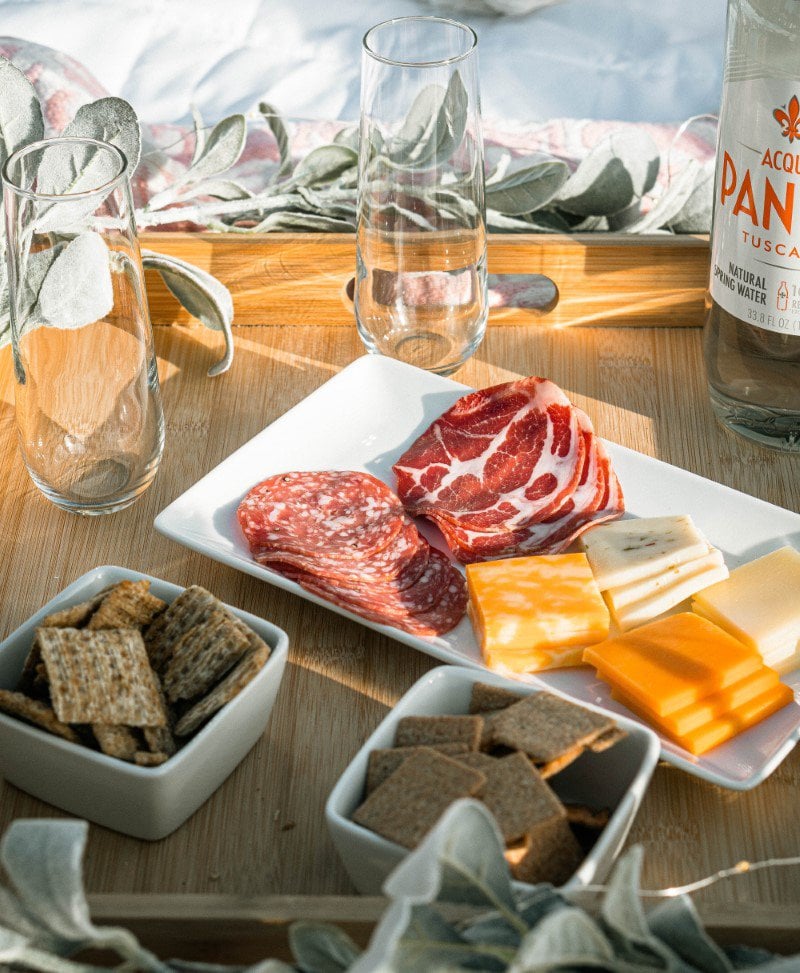
Meat and cheese, quality salami and coppa dry cured classic salumi, 4 cheeses with artisanal crackers, Tuscan simplicity.
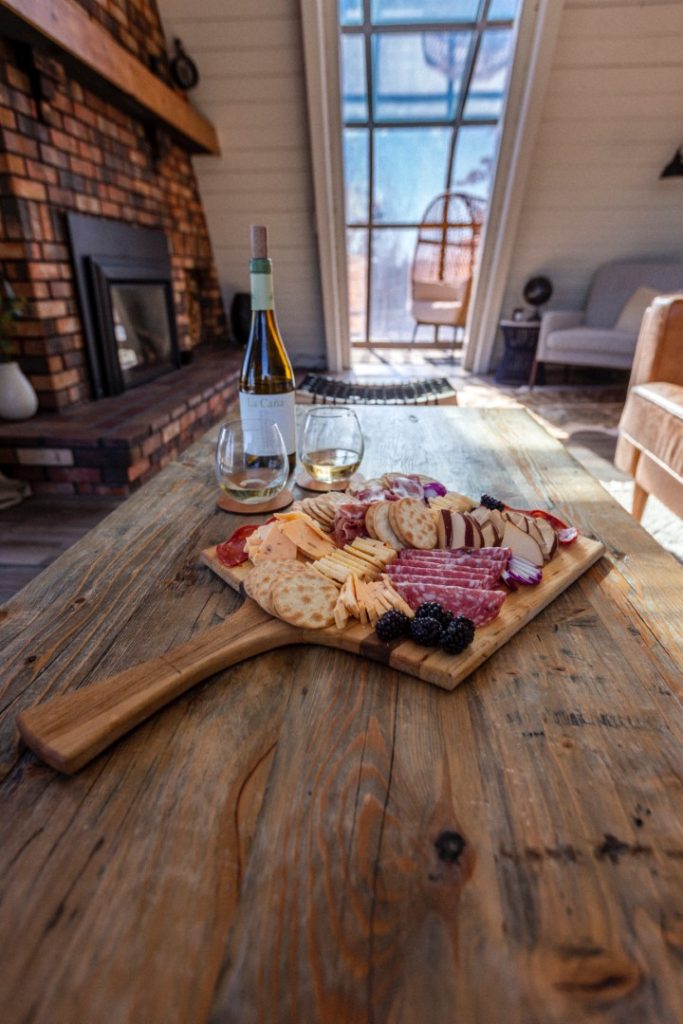
Special salami, gouda cheese with many variations, the ‘unorganized’ look, is put together really nicely. It doesn’t all need to be symmetrical!
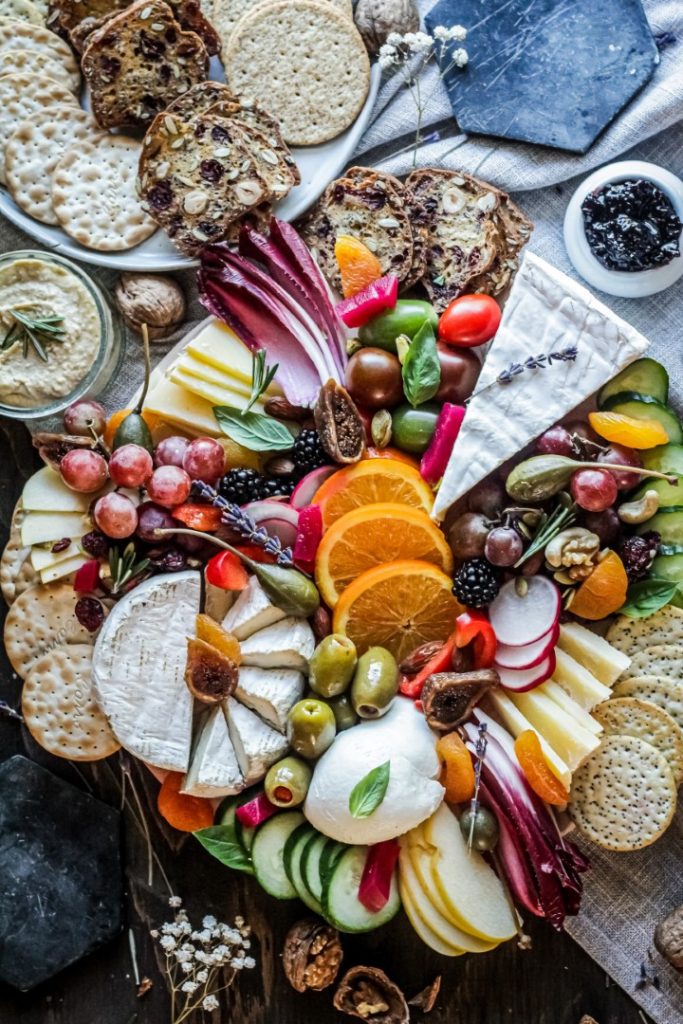
Abstract style charcuterie board, all non-meat foods covered in detail! Don’t think the flavors and pairing will all go together, but it does look great!

Simple, Dark, Delicious.
A snack size, just appreciating the simplistic and minimalist approach. Less is more, in many ways here.
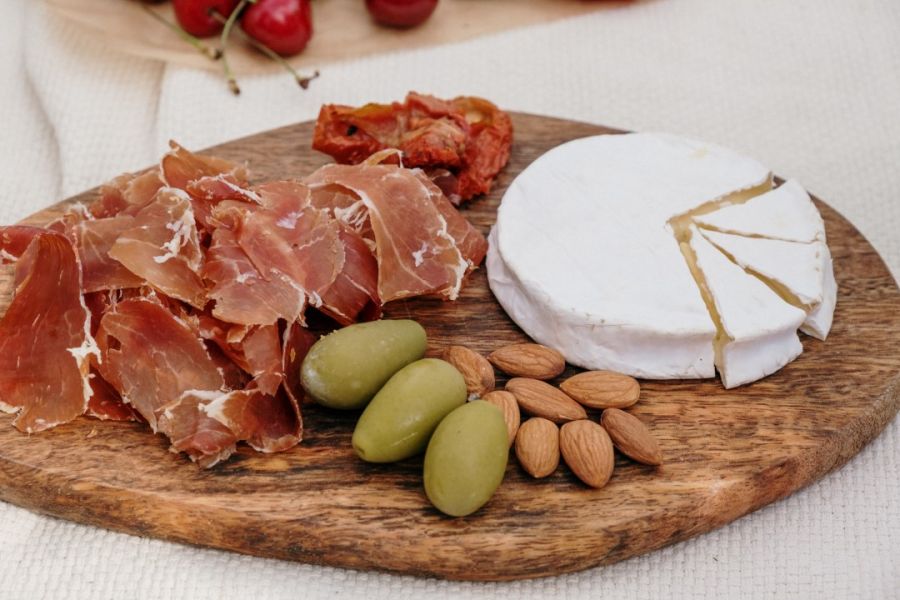
Again, simple country-style charcuterie board above, with prosciutto (Here is something I wrote about the shelf life of prosciutto also), sundried tomatoes, and quality brie cheese. I love to be inspired by not overstuffing the charcuterie (did you know if charcuterie is gluten-free, I wrote about this in detail) board.

Big contrasts, squeezing it on. Dried banana is very interesting, with possibly dried paw paw.
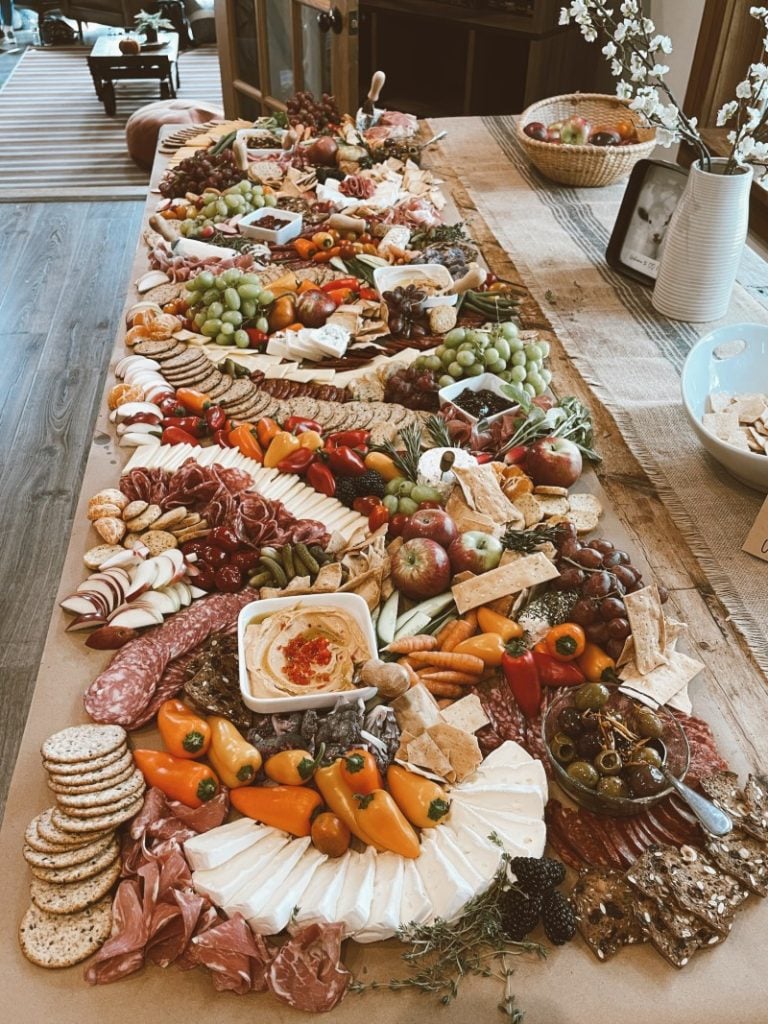
Wow, an entire table of charcuterie. All bases are covered, definitely all about presentation over flavor pairing here. Not sure who is going to eat whole yellow peppers. First time I’ve seen entire apples on a charcuterie… table!

Cardboard box style, from a hotel I think. Charcuterie to your hotel door! Look thought out, with combinations happening everywhere. Chutneys, Relishes and Pickles.
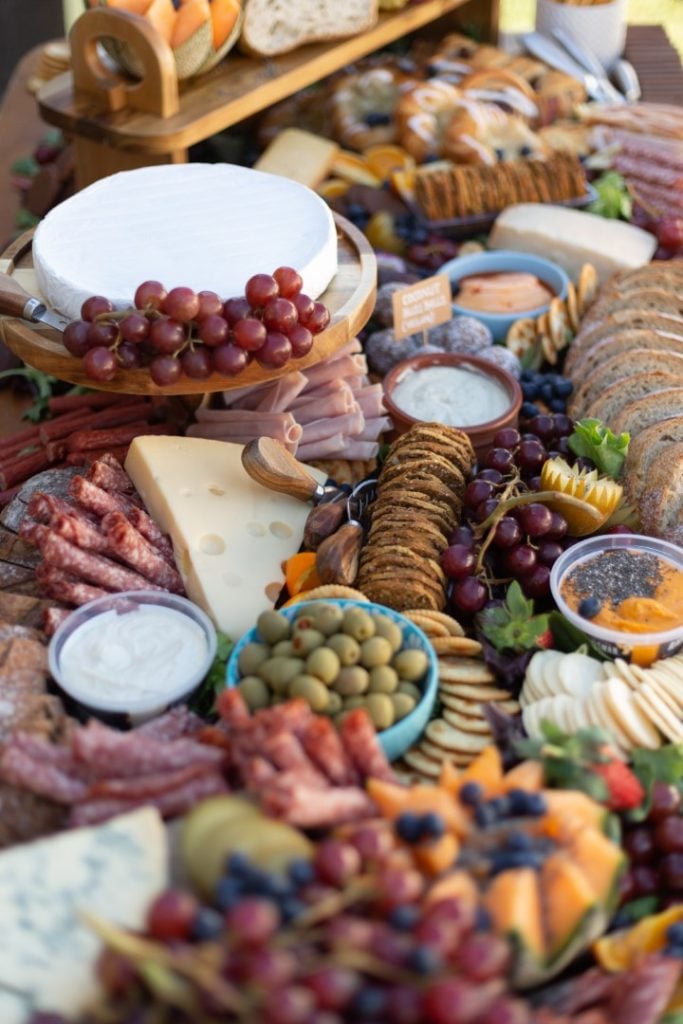
A festival spread of charcuterie inspiration here. Having interactive food is always fun, providing whole cheese or spreads and allowing people to lather on there own combinations in this large charcuterie spread.
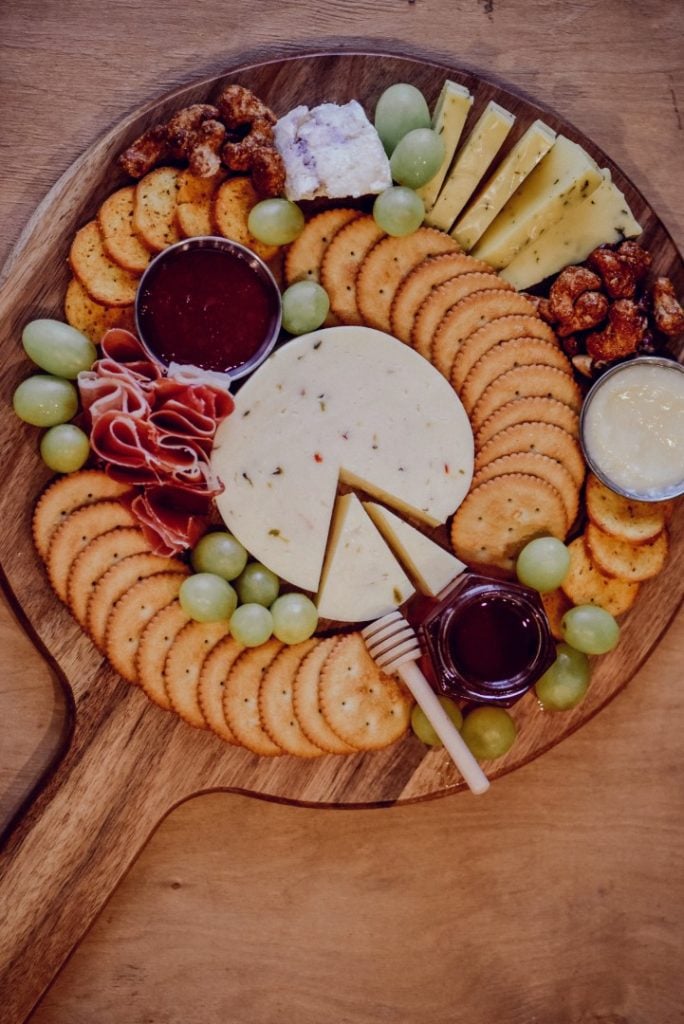
Symmetry is on show with this little charcuterie board, the classic French charcuterie board is, a larger version of this wooden paddle. Cheese and honey, remind me of Italy – specifically Tuscany.
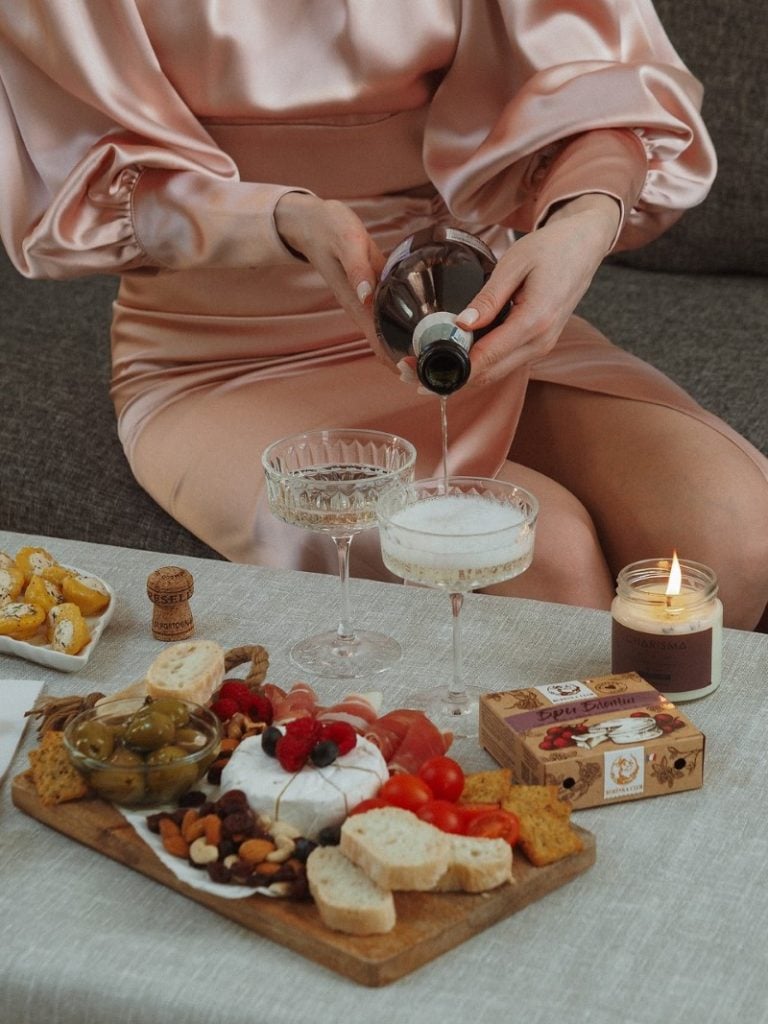
Sparkling dry wine is a classic match for salty dry cured meats, it can cut through the flavor, and also refresh the palate. This charcuterie board is targetted to 2-3 people.
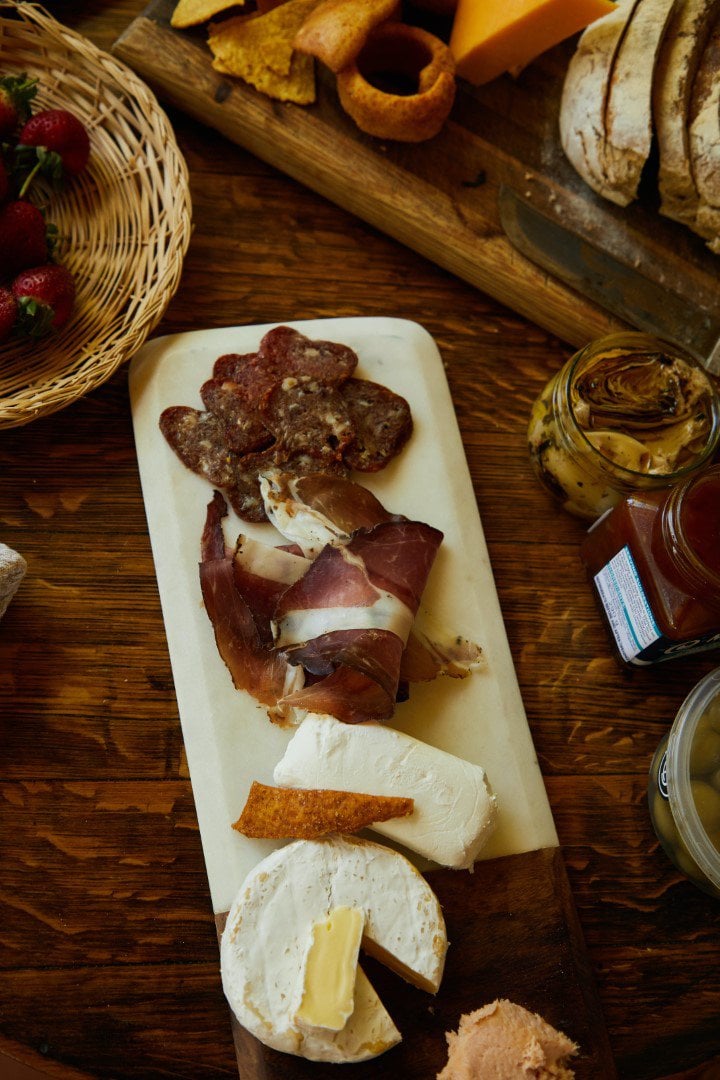
You may notice, if you look closely at this board, it’s half stone, half wood (here is another article on wood types for boards). A unique charcuterie board indeed, it contrasts the darker colors of the cured meats.

Rustic-edged charcuterie board, with various dark colors contrasting the charcuterie board.
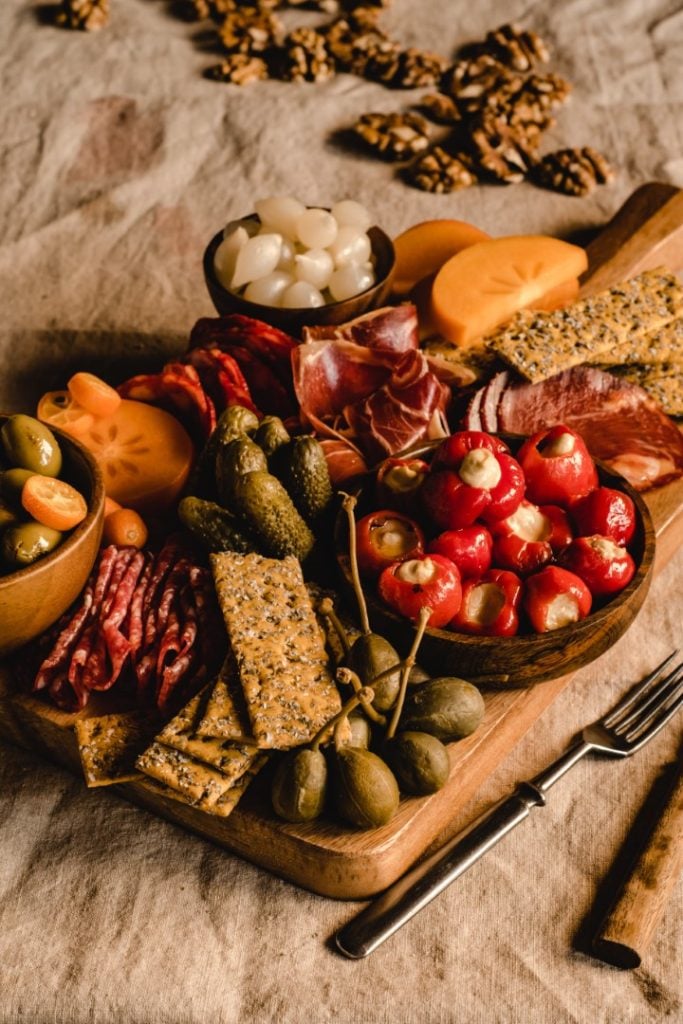
Umami Extreme Charcuterie board inspiration. Salty, acidic, sweet, and creamy. All aspects of flavor are covered in this small-sized board.
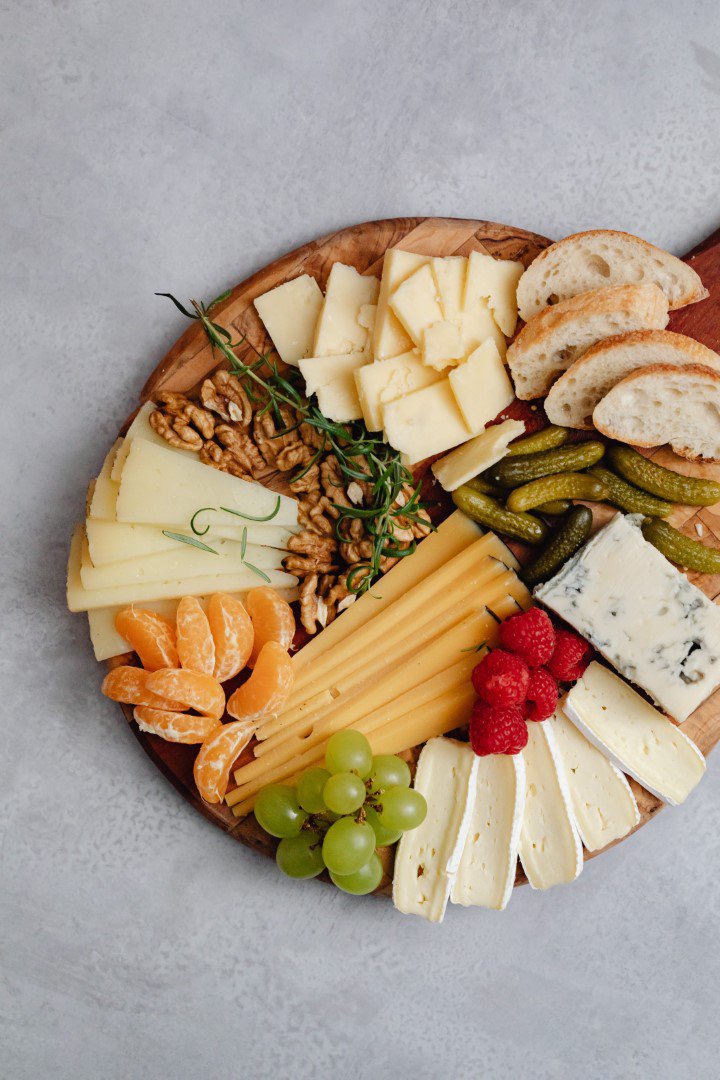
Cheese Charcuterie Board specialist, need maybe some more bread with this one. Nice light colors.
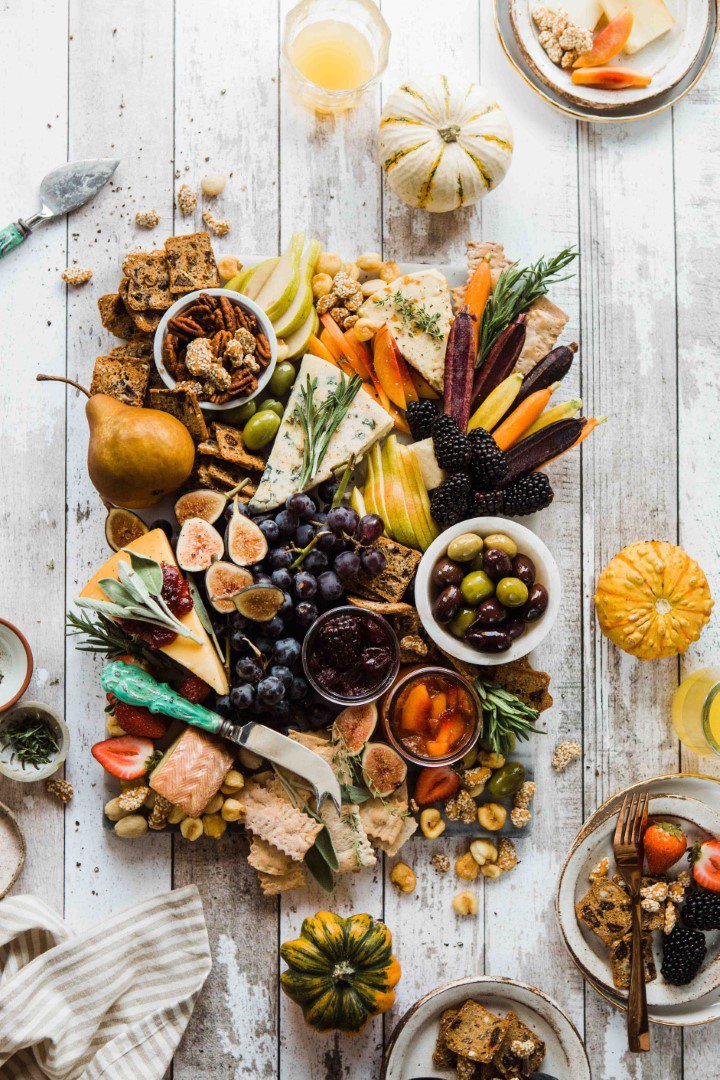
Food styling is in full effect on this charcuterie board (to help, I have a calculator for how much meat etc. per person I created), meatless modern styles. It’s all looking delicious, I skip the pumpkin squash though. The cheese knife is really inspiring, the figs and heirloom carrots are what I would pick first.

French classic paddle charcuterie board again, would be for 2-4 people.
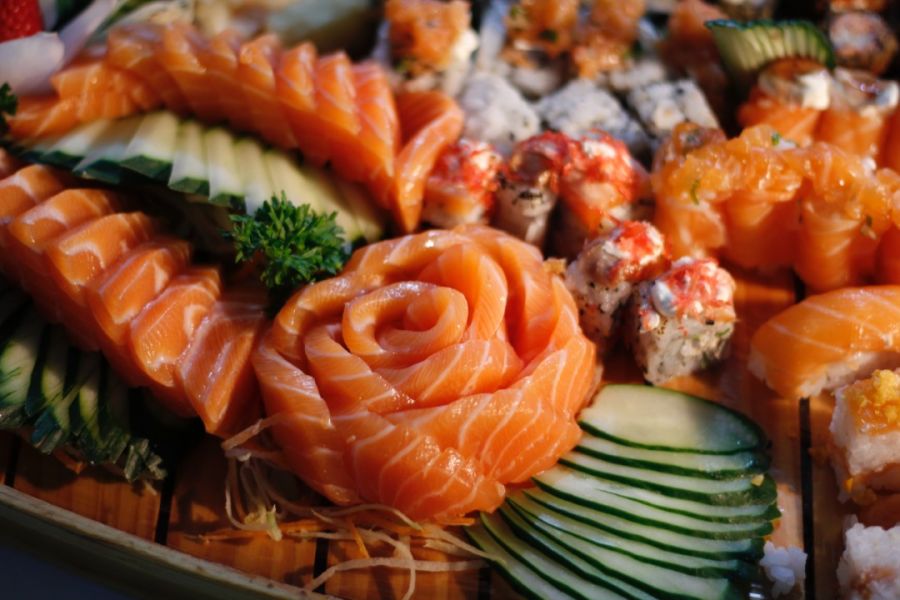
Why not Japanese sushimi-inspired charcuterie board? Like an obento box, hand, or chopsticks – that is up to you.

OCD charcuterie board, symmetry and quite an interesting bird in the centre picture of it.

Nuts, vine-ripened cheery tomatoes, tahini/hummus, and what a relaxed setting!
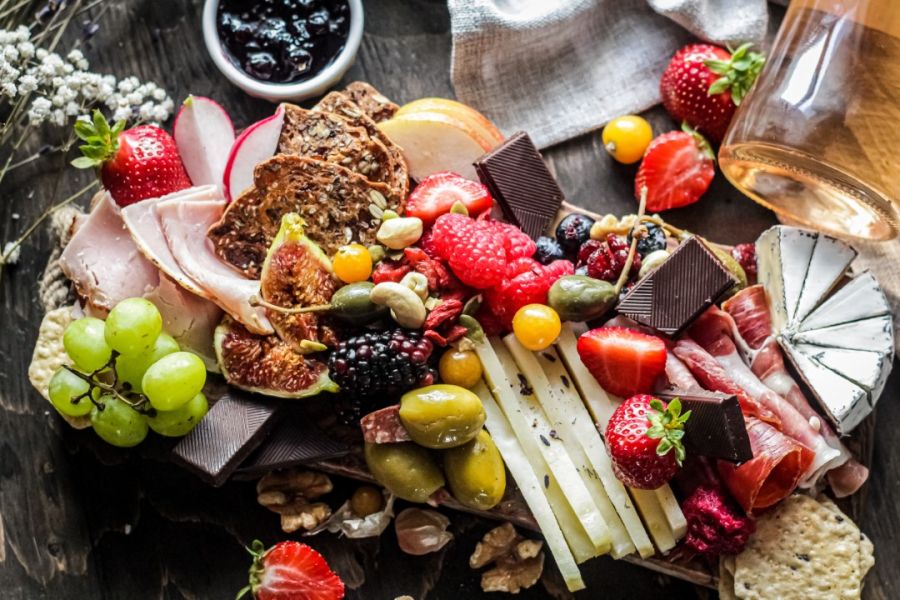
Messy charcuterie boards are inspirational too, where is the board? It’s actually slate, dark and moody.

A beautiful vegetarian charcuterie board, nearly a fruit platter. Green olives and cheese balls give great color contrast.

Another slate charcuterie board, pinks, and reds are contrasting to the black background.
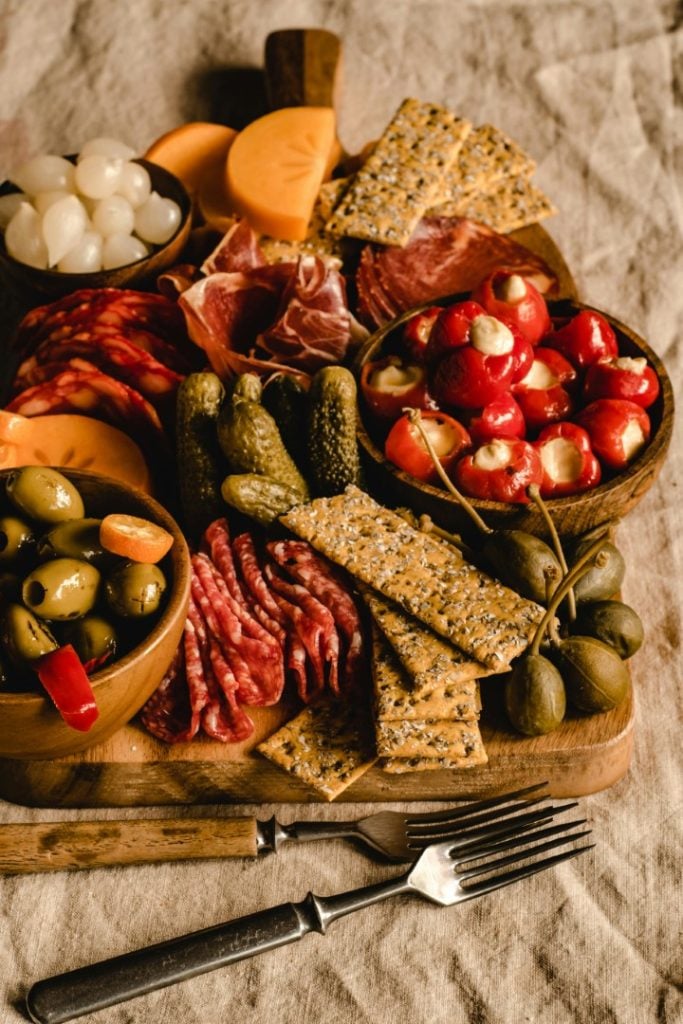
Fine salumi on this charcuterie board, with sweet, tangy, and creamy flavors with inspiring color combinations. Classy charcuterie (charcuterie cured meats are expensive, here I wrote why).

Many of my charcuterie board, or antipasti are like this. Since I make my own cured meats, they are showcased like this. Porchetta, prosciutto, coppa, parma and sardines!

Countryside style charcuterie board, soft focus so the cheese is all on the other side.
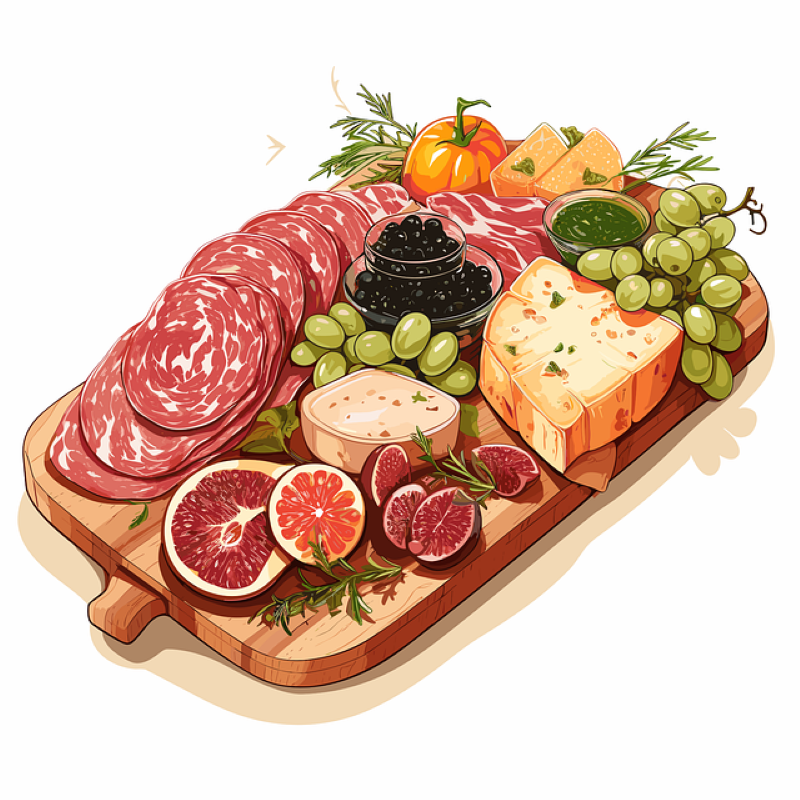
Slightly random, though worth including this is an A.I generated a charcuterie board! oranges, figs, salami, and a cartoon style!
Contrasts for Charcuterie Boards
Textures to Contrast
Crunchy, soft, melting wafer thin meat(here is something I wrote about epic charcuterie dry cured meats), chewy (homemade Sourdough Bread), and hard textures – customize any way you choose.
Easy, pop-in-your-mouth home marinated olives with an interesting texture. See below for more details on marinating olives.
These platters are about the ultimate finger foods.
Crunch
The crunch of baguettes or bread sticks is always an easy snack food that fits perfectly on a charcuterie board.
Fruit can be crunchy too.
Crackers can be soft or crunchy.
Soft
Soft cheeses or spreadable dips of various colors. I love beetroot, smokey hummus, or tapenades.
These all can work very well in a crowd.
Melting
Room temperature brie or camembert that is melting, you can smear it on soft breads or crackers
Spreadable
Hummus for the healthier option (I did a spirulina version once, nice and green!).
Quality liver pates and rillettes that can land on any cracker or fresh bread.
Convenient to Eat Without Plates
Napkins or serviettes are the way to go. Some basic knives are scattered around the board to cut the cheeses and smear them onto crackers or breads.
Plate if you are looking at a more substantial fare.
Certain things are really easy to put together. Like melon fruit with cured meat or pates with bread.
Sometimes, you can get to the next level. What about a homemade dukkah (cumin, nuts, and a few other spices) with good olive oil and quality balsamic? This is the definition of contrasting flavors with savory, acidic, and hopefully creamy oil (it doesn’t have to be olive oil, either).
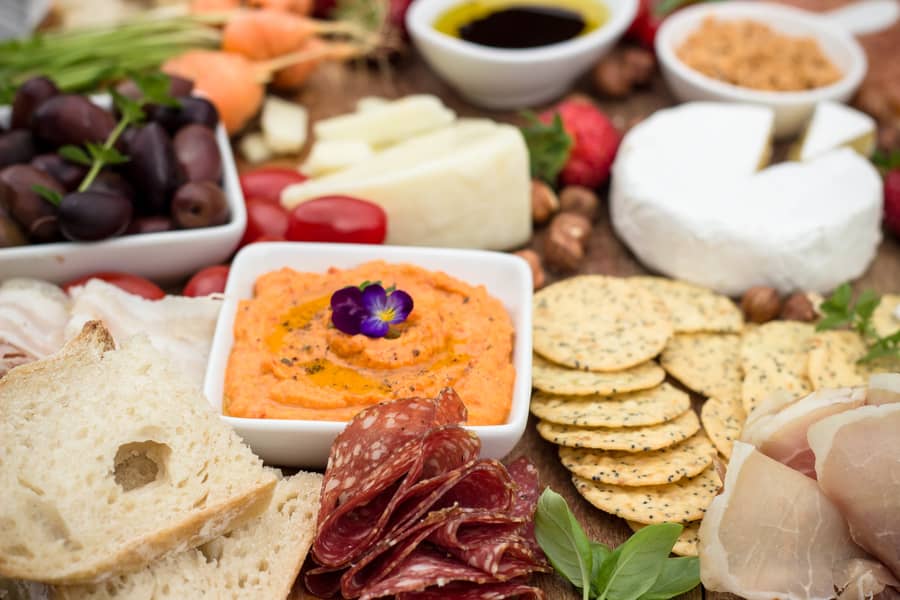
Selection of Cured Meat & Cheese
This is an area I am passionate about.
Hot Smoked fish or Gravalax – only takes 24 hours to prepare and will make a complete difference on your charcuterie board.
If you want some ideas on cured meats I found 50 exciting examples here.
Cheese – soft and hard are the obvious choices. Pre-slicing does make it easier for people.
Although, interactive food can always be an option with whole cheese.
Pair the fruit flavor with other components
Melon-type fruit with Prosciutto or Parma ham is an all-time classic Italian style. Italians do know what they are doing when it comes to food!
Spreadable fruit pastes with tartness can also contract the strong hard cheeses nicely.
Spreads & Dips for Flavor and Colour
Beetroot-based dips with awesome color.
The world of dips and spreads is wide. I look for nice colors for contrast.
A lot of traditional Italian delis will pre-spread the spreads before serving.
Home Crafted Food is Often the Best
The extra effort is always appreciated, here is a list we see a lot on our platters.
- Quick Pickled Cucumber – a few hours is all that’s needed
- Marinated olives
- Dukkah
- Hot Smoked Fish – I like to make this into a pate
- Tea Smoked Fish in the kitchen or on the gas grill
Hopefully, that will whet your appetite.
I will highlight some more ideas that hopefully can inspire you to either create your style or choose a classic.
Charcuterie Board -Traditional Styles vs. Fusion
- Italian Classic
- Vegetarian style
- Spanish
- Modern American
- European
- Seafood Styling
- UK
Italian Classic
Salumi boards, which are meat-focused, are a highlight of any Italian region since there are thousands of variations of the common salumi, an area of particular interest for me.
Quality cheese & cured meats bring a lot of complexity to the charcuterie board.
My cheeky homemade cured meats in a fridge, can provide you with something unique.
Vegetarian style
Nowadays, there are so many vegetarian options when it comes to spreads, dips, vegan cheeses & even vegan meat (tofu-based, for instance).
Hey, if is your style – no judgment here. I have created a few in my platter portfolio.
Spanish
Convenient tapas are of course classic Spanish. I like to have the Iberian & Serrano Ham, the real Spanish prosciutto is a way of describing this. The animals have a specific breed, in a specific environment with a unique diet – which I have heard includes a lot of acorns.
Oh yes, and chorizo of course, with intense flavors of garlic paprika, and chili.
Modern American
This is a melting pot of styles and flavors. Something Jamaican with some Texas Southern-style BBQ, why not?
There are so many interesting local products in just about any State that you really can put anything together here.
No rules.
European
It is a bit hard to put everything in the same charcuterie basket.
So let’s say pink perfectly marinated sardines of Scandinavia.
Heavy German, Dutch, or Eastern European cold-smoked meats.
There is such a variety of exciting food across this diverse continent.
Seafood Styling
Sicily can be a good inspiration for a seafood platter. They keep the tastes simple, using fresh and dried herbs to enhance their seafood-focused diet. Sicilian recipes can provide great inspiration.
UK
Cheese & pickles, easy done.
The rugged Scottish coastline seems to produce the finest seafood in my opinion.
Many other mighty regional ingredients can be procured, especially from the countryside of Wales, Ireland, and England.
Minimalist or Full Plump Charcuterie Board
I don’t believe the board has to be full of food. Sometimes, if you have special wares, you just want to highlight it and show off maybe something homemade.
Post Meat & Cheese Board The Modern Antipasti (The First Course) Platter
It all started with the mighty meat & cheese board in many Western places. Then the Italian influence and the Antipasti platter popped up and was used predominately in restaurant environments.
The new marketing of a more diverse platter came to be the Charcuterie Board. Predominately, this was the change over that happened recently in the United States.
Although, Charcuterie was ‘borrowed’ from the French, in the French cooking bible ‘Gastromonique‘, charcuterie is defined as either a purveyor of deli French foods or certain offal-based meat treats.
That doesn’t sound so appealing to the mainstream Western market taste buds quite often. However, there are some very special products & fares.
Your charcuterie board should showcase what you love about food. This for myself is homemade dry cured meats (also I’ve learned some tips on storing cured meats here), salumi, local fresh vegetables, and seasonal fruit if possible -all local and sustainable ideally.
Less Bulk, More Quality – Savoring the Savory
Again, I just want to say this is my style – I tend to not have a plump platter, piled too high. Let certain special foods speak out, and hopefully, there is a delicious and passionate story behind the food you can offer your loved ones.
Rustic styles platters with a scattering of goods can look amazing also.
Homemade is Always Appreciated The Most
Following on from the above, homemade, if possible, is appreciated the most, in my opinion. Just unwrapping plastic-covered products and putting them on a platter doesn’t really work for me.
Homemade shows you care, just one food on the board goes a long way.
Homemade dry cured meats – my passion, you can do in a normal fridge also.
Fresh Fruit and fresh Local Seasonal Vegetables
Sometimes, it’s just to pair up with some cured meats (here is many examples I put together about global cured meats), like melon matched to Prosciutto, Iberian, or Parma ham. Fruit matching can bring out more flavor or just give the platter a break from rich or dense foods.
Vegetables offer a variety of textures such as celery or sweet fresh seasonal carrots. Many passionate chefs talk about how sugar is lost once vegetables are pulled from the earth. I have noticed the taste difference; homegrown is best.
Offering ideally homegrown or super fresh vegetables can be a fine addition to the charcuterie platter.
Colors for Wetting the Appetite
The contrast of color makes a big difference; we eat with our eyes.
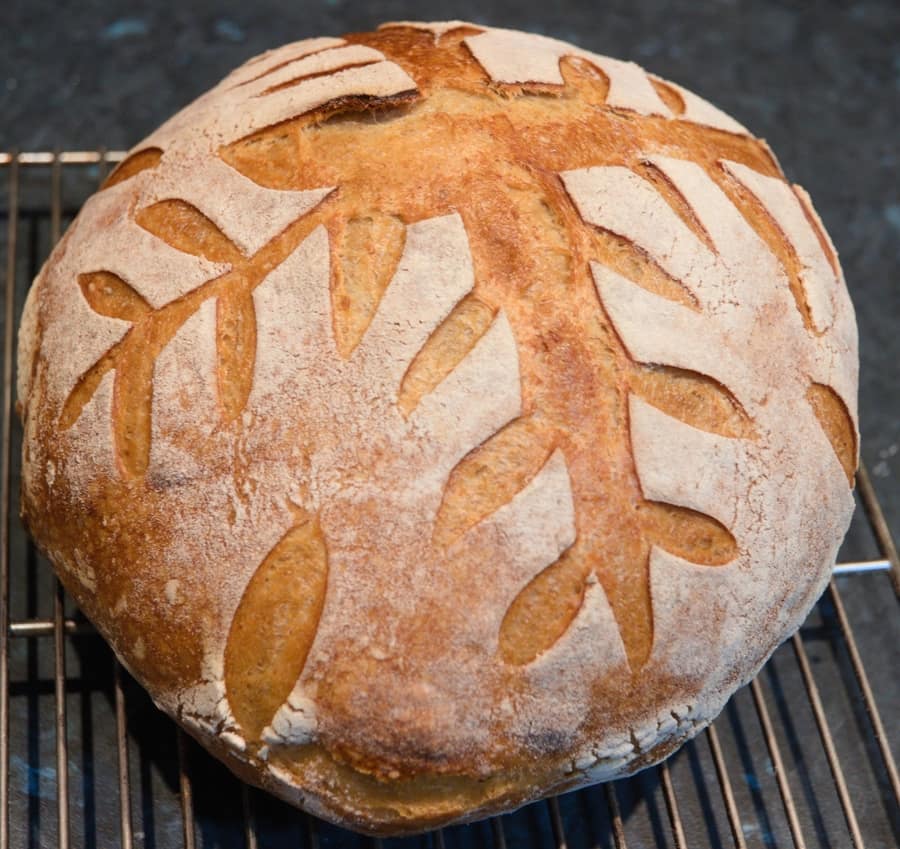
Red from meats, white/browns from bread/crackers, multicolored dips, dark colored olives, bright colored fresh vegetables, and creamy colored cheeses.
Different Colors/Hues of reds – Salami, Salumi
Be it salami or razor-thin parma ham, there are many subtle variations. Based on what breed and what the animal has eaten. This can have a large effect on color.
I know a farmer who breeds pigs for personal use. He has dozens of pecan trees on the farm. The pig meat is golden in color and tastes amazing!
These factors are all relevant when I think of glorious salumi (I explain what is sulumi and salami).
Types of Boards for the Charcuterie
I have a small olive wood board I bought in Italy while exploring the cured meat countryside around Norcia. It’s petite and excellent for showcasing fridge-cured meat. Less is more sometimes!
I think natural white plates work well as a background to the creations you will conjure up.
Anything is possible, I just tend to focus on the classic. However, I will find the right piece of driftwood along the ocean or river. Then, I can tailor it accordingly.
If you want some ideas on different styles of wood, for choosing the actual board/platter I wrote about some ideas here.
Below are some personal thoughts, to get the thoughts flowing.
Ideas & Inspiration
Homemade Cured Meats

Dips and spreads
This could be a vast list, if you are a foodie you probably have your favorites already!
My favorites are smoked hummus and beetroot dips.
Dried fruits
If you can’t get fresh fruit, dried fruit in the colder months can work well on a charcuterie board.
Depends of course on where in the world you are.
Preserved or Pickled Mushrooms
I found a dish from the famous Bar Tartine book, it is such a melting pot fusion of flavors. Find a link here.
There are many pickled mushroom recipes in the world, here is an easy recipe with lots of flavor.
Pickles
There are massive options here. I love pickled gherkins, carrots, or anything else that can offset some of the more fat-focused focus of cheese and meat—which is commonly on a platter or board.
Pickled jalapenos? Why not.
Balsamic and Quality Dipping Oils
This is one of my classics, quality balsamic vinegar with extra virgin oil. It doesn’t have to be olive try hazelnut, avocado, hemp, or macadamia.
Nuts
Roasted or natural if you want the nutrients. Salty nuts contrast with a lot on most platters/charcuterie boards.
Flavor the nuts with spices to give a fresh angle.
Cheese
Again, if you’re a foodie you should have your bases covered here.
The basics:
- Blue cheese – in some form
- Brie / Camembert – at room temperature so you can be easily smeared onto crackers or bread
- Hard Cheese – an aged cheese with a bit of tang always goes down well
Olives and Sun-Dried Tomatoes
Quick marinades with slivers of garlic, and fresh hard herbs (rosemary, thyme & oregano, and peppercorns). Takes seconds to throw together and half an hour to start bringing together the new flavor.
Are many varieties of sun-dried tomatoes, sweet, concentrated flavors that can work with cheeses.
Sometimes, if the marinating oil is good, you can use this for dousing with bread. I also use the sun-dried oil to fry up beautiful trout – that’s another story altogether.
Breads and Crackers
Crusty or soft. Thick and seedy crackers or soft rice cracker styles. No need to go into depth here.
Pâté
Liver pate is one of my favorites with a lot of cracked pepper. Wild game pate can be excellent also.
Forcemeat/offal showcased in all it glory. Thanks again France.
Rillettes
The French came up with this around 1845 supposedly, as per Wiki. Salt-cured meat (commonly), which is cooked and stored in fat.
Hopefully, this post has inspired you. If you want more information on curing meat, you can find it around here!
Resources Used:
As well as my own knowledge, experience, and research. I used images from these image sites, where many photographers of charcuterie boards can be found:

Tom Mueller
For decades, immersed in studying, working, learning, and teaching the craft of meat curing, sharing the passion and showcasing the world of charcuterie and smoked meat. Read More
